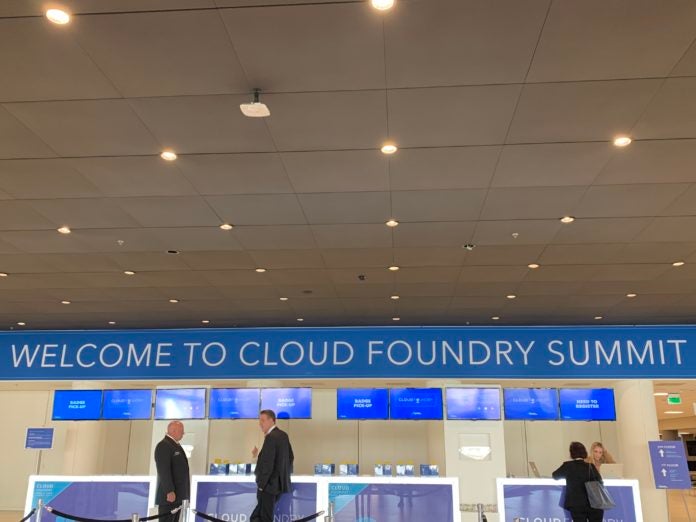Broad deployment of Cloud Foundry has nearly doubled in just the last two years, according to the latest report released by Cloud Foundry Foundation, home to open source projects helping build the future of cloud applications. The study was released at the Foundation’s European Cloud Foundry Summit in The Hague. It revealed that 45 percent of user respondents describe their Cloud Foundry use as “broad” compared to 30 percent in 2018 and 24 percent in 2017. Furthermore, 39 percent of developers are deploying applications in less than one day. Nearly one in five respondents started using the platform in just the last 12 months, indicating a healthy and growing community of developers. (Source: e3zine)
Ballerina Reinvents Cloud Native Middleware as a Programming Language
Ballerina has announced a new open source project created and sponsored by WSO2, which radically simplifies how developers will build and deploy cloud native distributed applications and services. Ballerina 1.0, which is available under the Apache License, is being announced in conjunction with ApacheCon North America 2019. Ballerina, an ApacheCon Gold Sponsor, will offer technical sessions and demos of the new Ballerina release at the event. WSO2 CTO Paul Fremantle will also hold a session on Tuesday, September 10 at 2:30 p.m., “Ballerina – Re-inventing Middleware in a Programming Language.” ApacheCon North America 2019 is being held September 9-12, 2019 at the Flamingo in Las Vegas, Nevada. (Source: Yahoo!)
The Eclipse Foundation Releases Jakarta EE 8 Specifications
The Eclipse Foundation today announced during the JakartaOne Livestream virtual conference the release of the Jakarta EE 8 Full Platform and Web Profile specifications and related Technology Compatibility Kits (TCKs). This release provides a new baseline for the evolution and innovation of enterprise Java technologies under an open, vendor-neutral, community-driven process. As a result, Java vendors, developers, and customers alike now have a foundation for migrating mission-critical Java EE applications and workloads to a standard enterprise Java stack for a cloud native world. (Source: Financial Buzz)
Open Source Security Platform Snyk Raises $70m
Israel open source security platform developer Snyk has raised $70 million led by Accel and with the participation of previous investors GV and Boldstart Ventures. In its previous financing round last September, the company raised $22 million at a company valuation of $100 million, a source told “Techcrunch” at the time. (Source: Globes)
Kong Open Sources Kuma: The Universal Service Mesh
Kong has announced the release of a new open source project called Kuma. Based on the popular open source Envoy proxy, Kuma is a universal control plane that addresses limitations of first-generation service mesh technologies by enabling seamless management of any service on the network. (Kong Press Release)
ONF Open Sources Stratum
The Open Networking Foundation (ONF) today open sourced the Stratum project and said it will be the foundation for ONF’s next-generation SDN stack for operators. Stratum is a silicon-independent switch operating system for software-defined networks that runs on a variety of switching silicon and various whitebox switch platforms. It’s now available under the Apache 2.0 open source license. (SDX Central)
Manjaro Linux Goes Commercial
One of the most popular Linux distribution, Manjaro Linux, is heading toward its commercial path with the creation of a company around the project to keep it sustainable.
The project has founded a company called Manjaro GmbH & Co. KG, to enable full-time employment of maintainers and exploration of future commercial opportunities.
Project’s idea behind the move is to:
- Enable developers to commit full time to Manjaro and its related projects;
- Interact with other developers in sprints and events around Linux;
- Protect the independence of Manjaro as a community-driven project, as well as protect its brand;
Provide faster security updates and a more efficient reaction to the needs of users; - Provide the means to act as a company on a professional level.
That said, Manjaro will remain a community project; nothing is going to change with the project. Manjaro is also working with the Linux Foundation’s CommunityBridge and OpenCollective projects for sponsorships.
Commercialization of Linux and open source is often frowned about by some users of open source, but the fact is that Linux or any other open-source project need commercialization to succeed. Trade and commerce is the backbone of modern human civilization, without it we would become hunters and gatherers. It’s a wise decision by the project to take this step to ensure sustainability.
Microsoft To Hosts Windows Subsystem For Linux Conference
Hayden Barnes, founder of Whitewater Foundry, a startup focusing on Windows Subsystem for Linux (WSL) announced WSLconf 1, the first community conference for WSL. This event will be held on March 10-11, 2020 at Building 20 on the Microsoft HQ campus in Redmond, WA. The conference is still coming together. But we already know it will have presentations and workshops from Pengwin, Whitewater’s Linux for Windows, Microsoft WSL, and Canonical’s Ubuntu on WSL developers. (Source: ZDNet)
ArangoDB: Three Databases In One
ArangoDB, a German database expanding its business in the United States, has released new capabilities in version 3.5 of its eponymous database management software to make it easier to query and search growing data sets across multiple data models. With ArangoDB, data can be stored as key-value pairs, graphs or documents and accessed with one declarative query language. And you can do both at the same time — a document query and a graph query. The combination offers flexibility and performance advantages, explained Claudius Weinberger, CEO. (Source: The New Stack)
Google Open Sources Tool For Pivacy
Google is open-sourcing a library that it uses to glean insights from aggregate data in a privacy-preserving manner. Called Differentially Private SQL, the library leverages the idea of differential privacy (DP) — a statistical technique that makes it possible to collect and share aggregate information about users, while safeguarding individual privacy. This allows developers and organizations to build tools that can learn from aggregate user data without revealing any personally identifiable information. (Source: The Next Web)



